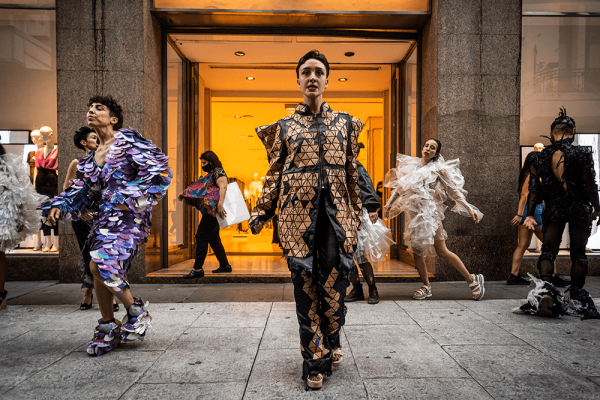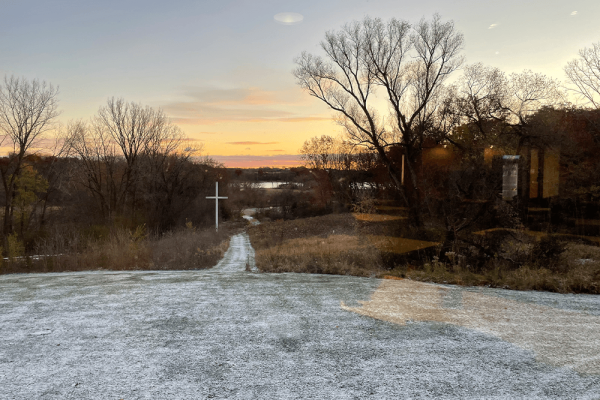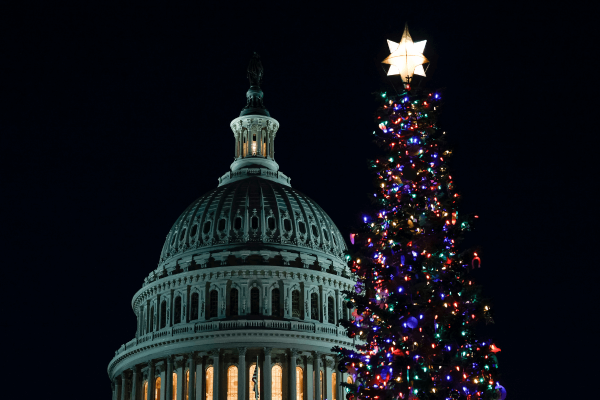Lately I’ve been thinking a lot about clothes — their power to oppress people but also advance justice. If this sounds far-fetched, I invite you to reach deep into the pockets of the clothes you are currently wearing. Go ahead, try it.
If you are wearing clothes traditionally marketed to men, your pockets likely hold your entire hand, wallet, and maybe even your phone. But if you are wearing clothes traditionally marketed to women, your clothes likely do not have pockets — or the pockets are so small you’re struggling to fit your pinky into them.
Have you ever wondered why? As it turns out, our pockets — like all fashion choices — are not just a matter of changing trends; the clothes we wear are deeply intertwined with issues of gender, capitalism, climate change, labor rights, and faith. The decisions we make around fashion and clothes can help us live out our faith and justice practices, embedding them into our everyday lives.
Take pockets for example: Women’s clothes in Europe and the U.S. used to have enormous, tied-on pockets hidden under skirts. In the late 1700s, garment makers added sewed-in pockets to the clothing of people who could own property and who needed to carry money, documents, or even weapons: men. By the late 18th century, women’s clothes became more form-fitting and tied-on pockets were ditched for a tiny pouch, carried by hand. Later, when women began to advocate for equal political, financial, and voting rights, women started teaching other women how to sew pockets into their clothes, allowing them to navigate public spaces unaccompanied and carry important documents. For example, what became known as the “suffragette suit,” popular in 1910, had at least six pockets. During World War I and II, women joined the workforce and gained more pockets, but when men came back to their jobs after the wars, women lost their jobs and their pockets; the popularity of handbags rose. Today, when designers don’t include pockets in women’s clothing, they are assuming women either don’t need to carry anything or will have their hands free to carry a purse — vestiges of the same sexist ideas that originally removed pockets from women’s clothing.
Christian faith has a lot to say about the significance of clothes, especially as a way to practice our faith and justice. Consider that the Bible dedicates whole chapters to descriptions of Levitical garments, how they were to be made, and who was qualified to make them (Exodus 28, Leviticus 8:7-9). In the book of Esther, Mordecai uses clothes to lament and protest injustice against the Jewish people, dressing himself in sackcloth and ashes as he wails through the city (Esther 4:1-4). John the Baptist wore clothing made of camel’s hair and a leather belt, a protest against the long robes and comfortable lifestyle of the religious teachers of his day (Matthew 3:4).
I've especially been thinking about clothes and justice this month, which marks 50 years since Congress sent the Equal Rights Amendment to the states to be ratified on March 22, 1972. This amendment to the U.S. Constitution would prohibit any discrimination based on sex. On January 27, 2022, the ERA met all the constitutional requirements to be added to the Constitution — after being ratified by 38 states, passed by a majority of Congress, and following the two-year waiting period after Virginia became the 38th state to ratify it. Even so, opponents claim that the ERA shouldn’t be added because of procedural questions. Gender justice advocates are asking Congress to remove the deadline that opponents are using to stall the ERA. Advocates are also asking Attorney General Merrick Garland to withdraw the Trump administration memo that blocked the ERA from being officially added to the Constitution.
In other words, we are still working toward many of the same goals women advocated for 100 years ago, including equal pay for equal work. We are also still working to ensure women and LGBTQ people have protections against all forms of gender-based violence and that those protections are fully enforced.
In continuing this good work, fashion continues to be a powerful tool. At the 2017 Women’s March on Washington, women and allies wore homemade pink hats made from patterns shared around the internet to protest President Trump’s inauguration, the derogatory comments he made about women, and the negative impact many of his campaign promises would have on women and LGBTQ people. At the same time, these pink hats also became emblematic of an exclusionary white feminism that did not make space for trans women and women of color.
But just as fashion and clothing can be used to exclude, it can also liberate.
This women’s history month, Sojourners launched Clothed in Glory: Fashion, Faith, and Social Justice, a space to practice dressing ourselves so we can seek justice in an embodied way. The spiritual discipline of getting dressed with intentionality helps us remember the goodness and glory of our bodies — bodies made in the image of God who created us and loves us all equally, regardless of sex, gender, race, ethnicity, ability, or sexual orientation. It’s a space to think critically about what we wear, engaging with fashion and advocacy to live out our faith and advance justice.
Getting dressed isn’t something we simply think about or talk about, it is something we do. For that reason, fashion is a spiritual discipline that is uniquely effective in helping us lament the injustices we see in the world. Fashion can be a direct response to the ways that our bodies are hurt and oppressed. When we pursue justice to protect our bodies, we reaffirm the glory of the image of God.
I invite you to clothe yourself in glory this year as we advocate for a world where all people are given equal respect, opportunity, and protection; a sustainable world that pursues climate justice; and a world where the rights of all workers are protected.
Got something to say about what you're reading? We value your feedback!







